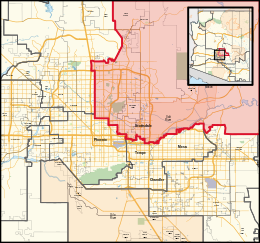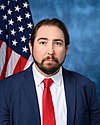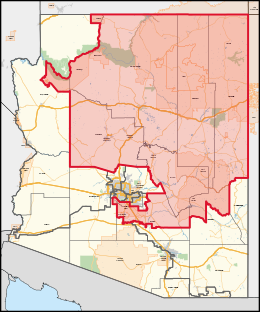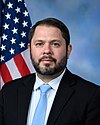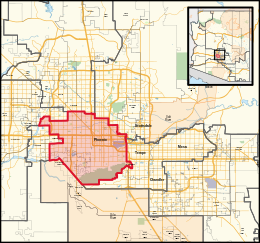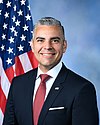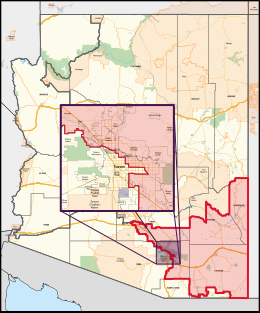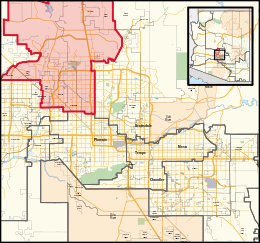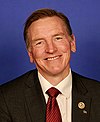
Since Arizona became a U.S. state in 1912, it has sent congressional delegations to the United States Senate and United States House of Representatives, beginning with the 63rd United States Congress in 1913. Before becoming a state, the Arizona Territory elected a non-voting delegate at-large to Congress from 1864 to 1912.. Each state elects two senators to serve for six years, and varying members of the House, depending on state population, to two-year terms. Arizona has sent nine members to the House in each delegation since the 2010 United States Census.

These are tables of congressional delegations from the State of Texas to the United States Senate and United States House of Representatives.

The 1962 United States House of Representatives elections was an election for the United States House of Representatives on November 6, 1962, to elect members to serve in the 88th United States Congress. They occurred in the middle of President John F. Kennedy's term. As in most midterm elections, Kennedy's Democratic Party lost seats to the opposition Republican Party, but retained a majority. House Democrats were expected to lose their majority, but the resolution over the Cuban Missile Crisis just a few weeks prior led to a rebound in approval for the Democrats under President Kennedy.

The 1932 United States House of Representatives elections were elections for the United States House of Representatives to elect members to serve in the 73rd United States Congress. They were held for the most part on November 8, 1932, while Maine held theirs on September 12. They coincided with the landslide election of President Franklin D. Roosevelt.

Kansas is divided into 4 congressional districts, each represented by a member of the United States House of Representatives. The number of districts in Kansas remained unchanged after the 2010 census. Historically, the state has held as many as eight seats (1893–1933). The number of congressional seats decreased from five to four following the 1990 census. Between 1990 and 2000, the population of Kansas grew by 8.5% from 2,477,574 to 2,688,418, making it the 32nd most populated state; all four congressional seats were retained.
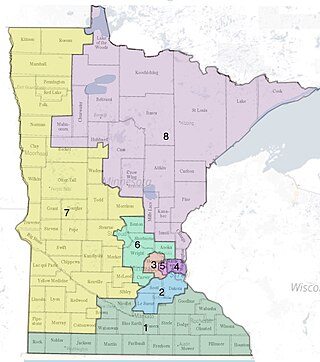
Minnesota is currently divided into eight congressional districts, each represented by a member of the United States House of Representatives. After the 2020 census, the number of Minnesota's seats remained unchanged.

Kentucky is currently divided into six congressional districts, each represented by a member of the United States House of Representatives. The number of congressional districts has been set at six since the 1990 redistricting cycle.

Maine is divided into two congressional districts, each represented by an elected member of the United States House of Representatives.
Arizona's 5th congressional district is a congressional district located in the U.S. state of Arizona, currently represented by Republican Andy Biggs.
New York's 7th congressional district is a congressional district for the United States House of Representatives in New York City. It includes parts of Brooklyn and Queens. Democrat Nydia Velázquez represents the district in Congress.

There are currently seven United States congressional districts in South Carolina. There have been as few as four and as many as nine congressional districts in South Carolina. The 9th district and the 8th district were lost after the 1840 census. The 5th district and the 6th district were also briefly lost after the Civil War, but both had been regained by the 1880 census. Because of the state population growth in the 2010 census, South Carolina regained its 7th district, which had remained unused since the Civil War.

Wisconsin is currently divided into 8 congressional districts, each represented by a member of the United States House of Representatives. After the 2020 census, the number of Wisconsin's seats remained unchanged.

After the 2000 census, the Commonwealth of Pennsylvania was divided into 19 congressional districts, decreasing from 21 due to reapportionment.
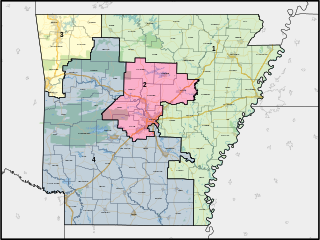
The U.S. state of Arkansas currently has four United States congressional districts. The state has had as many as seven districts; the 5th district existed from 1883 through 1963. The 6th existed from 1893 to 1963. The 7th existed from 1903 to 1953. No Democrat has won a House seat in the state since 2012.
Michigan's 7th congressional district is a United States congressional district in Southern Michigan and portions of Central Michigan. From 2004 to 2013 it consisted of all of Branch, Eaton, Hillsdale, Jackson, and Lenawee counties, and included most of Calhoun and a large portion of western and northern Washtenaw counties. The current district, which was created in 2022, is centered around Lansing, Michigan's state capital, and includes all of Clinton, Shiawassee, Ingham, and Livingston counties, as well as portions of Eaton and Oakland counties.

Georgia is represented in the United States House of Representatives by 14 elected representatives, each campaigning and receiving votes in only one district of the 14.

Michigan is divided into 13 congressional districts, each represented by a member of the United States House of Representatives.

Iowa is divided into four congressional districts, each represented by a member of the United States House of Representatives. The state's congressional map is roughly divided by quadrants in the northeast, northwest, southeast, and southwest sections of Iowa.
Arizona's 9th congressional district was created as a result of the 2010 census. The first candidates ran in the 2012 House elections, and the first representative was seated for the 113th Congress in 2013. Formerly located in the Phoenix area, the 9th district has been in western Arizona since 2023.

The 2012 United States House of Representatives elections in Arizona were held on Tuesday, November 6, 2012, to elect the nine U.S. representatives from the state, one from each of the state's nine congressional districts, including the newly created 9th district following the 2010 United States census. The elections coincided with other federal and state elections, including a quadrennial presidential election, and a U.S. Senate election. Primary elections were held on August 28, 2012.


